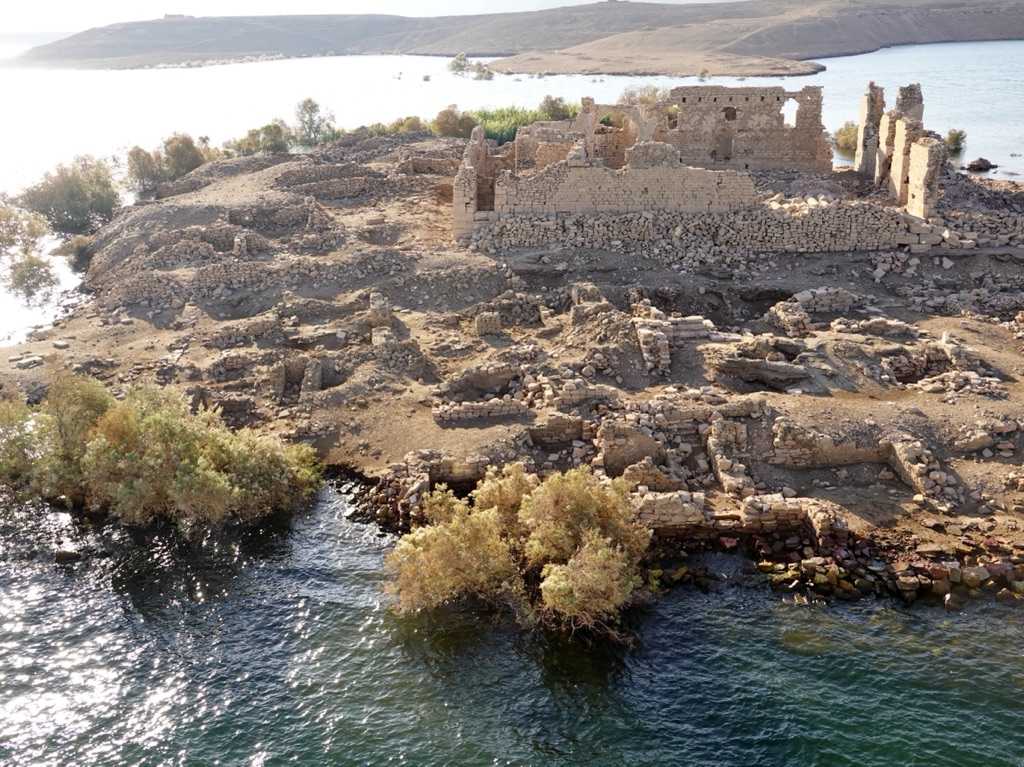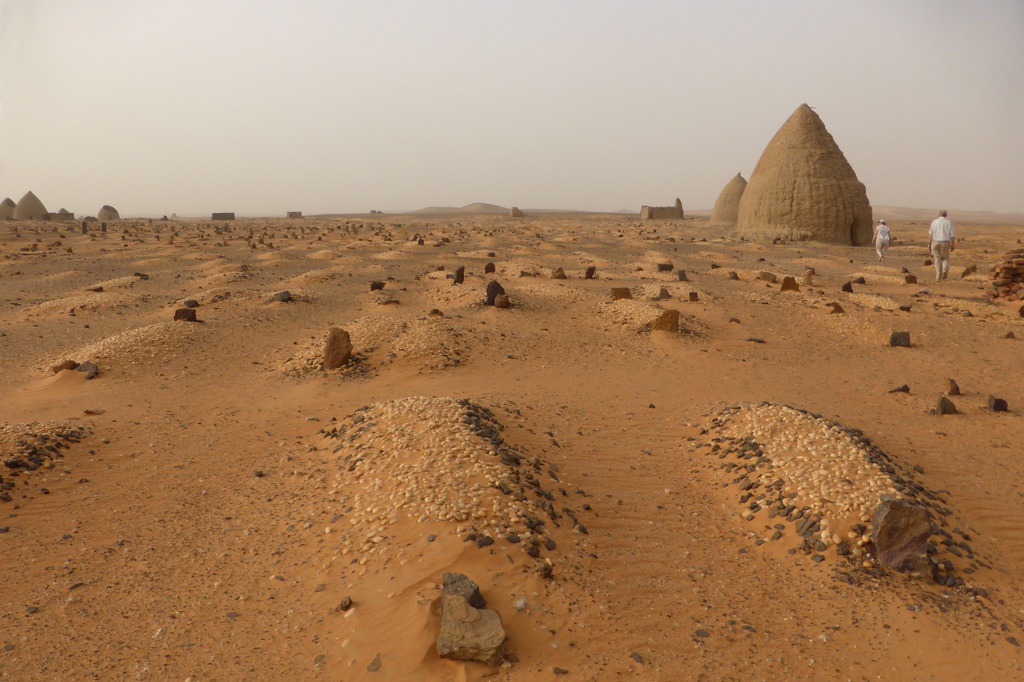Old Dongola was the capital of the Makurian state in medieval Nubia. It thrived as a political and commercial center from the 6th to the 14th century AD. The city is located on the east bank of the Nile River in what is now Sudan. It’s known for its unique archaeological remains, including churches, monasteries, and palaces. The site offers a glimpse into a civilization that managed to fuse indigenous African elements with Mediterranean influences.
The Kingdom of Makurian
The Kingdom of Makuria was a prominent Nubian state that flourished between the 5th and the 15th centuries AD, situated in what is today northern Sudan and southern Egypt. This civilization emerged after the collapse of the Kingdom of Kush, marking a significant chapter in the history of the Nile Valley. Makuria was one of the three Christian Nubian kingdoms, alongside Alodia and Nobatia, with its capital at Old Dongola. The timeline of Makuria is marked by periods of prosperity and conflict, serving as a cultural and military bulwark against the expansion of Islam into Africa.
One of the major moments in the history of Makuria was the signing of the Baqt, a peace treaty with the Rashidun Caliphate in the mid-7th century. This treaty, unique in the annals of medieval diplomacy, allowed for peaceful coexistence and trade between the Christian kingdom and its Muslim neighbors to the north for several centuries. The Baqt exemplified Makuria’s diplomatic acumen and contributed to its longevity as a Christian enclave in a predominantly Islamic region.
Religion played a central role in Makurian society. Christianity was introduced to the region in the 6th century, and Makuria became a stronghold of the Coptic Orthodox Church. The kingdom was renowned for its religious architecture, including magnificent churches and monasteries adorned with frescoes that blended Christian iconography with indigenous African art styles. The Cathedral of Dongola, with its intricate wall paintings, stands as a testament to the kingdom’s rich religious and cultural heritage.
Social and daily life in Makuria was shaped by its geographical location and economic activities. The Nile River was the lifeline of the kingdom, supporting agriculture and facilitating trade. Makurians cultivated sorghum, wheat, and barley, and were skilled in crafting pottery and metalwork. Trade with neighboring regions brought wealth and foreign influences, which were reflected in the material culture excavated from Makurian sites. The society was stratified, with a ruling class of nobles and clergy at the top, followed by soldiers, artisans, and farmers.
The governance of Makuria was monarchical, with a king (known as the “Eparch”) at its head. The kingdom’s rulers were often involved in military campaigns to defend their territory and in diplomatic missions to maintain the kingdom’s autonomy. While the names and deeds of many Makurian kings have been lost to history, some, like King Merkurios, who led the kingdom during the famous First Battle of Dongola against the Arabs in 652, are remembered for their valor and leadership.
Makuria’s military prowess was demonstrated in several key battles and confrontations, most notably against Arab invaders. The First Battle of Dongola, where Makurian forces reportedly used a powerful weapon known as “Greek fire,” was a significant victory that ensured the kingdom’s survival and the continuation of the Baqt treaty. However, by the 14th century, the kingdom began to face increasing pressures from the Mamluk Sultanate of Egypt, leading to its gradual decline.
The decline of Makuria was a protracted process, influenced by internal strife, environmental changes, and external pressures. By the late 14th century, the kingdom was fragmented into smaller principalities, and the once-thriving capital of Old Dongola began to be abandoned. The final blow came in the early 16th century when the Funj Sultanate of Sudan conquered the region, marking the end of the Christian kingdom of Makuria.
Despite its fall, the Kingdom of Makuria has left a lasting legacy in the Nile Valley. Its archaeological sites, including the ruins of Old Dongola, provide valuable insights into a civilization that once served as a cultural and religious bridge between Africa and the Mediterranean world. The study of Makuria contributes to our understanding of the complex historical dynamics of the region and the resilience of its people in the face of changing political and environmental landscapes.

Qasr Ibrim
Perched on a cliff above the Nile, Qasr Ibrim stands as a silent sentinel to the history of Nubia. This ancient site, once a major city of the Meroitic kingdom, later became a strategic Roman stronghold and an important Christian center. Over time, it evolved into an Islamic outpost. Its layers of occupation offer a rich tapestry of cultural history, preserved in the arid climate of southern Egypt. Archaeologists have unearthed texts, frescoes, and artifacts that provide a window into the lives of its past inhabitants. Qasr Ibrim’s significance is not only in its continuous occupation but also in the stories of cultural exchange and conflict it tells.

